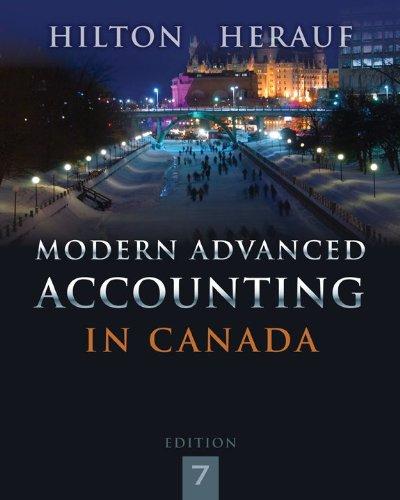In early September Year 1, your firms audit client, D Ltd. (D) acquired in separate transactions an
Question:
All three companies are federally incorporated Canadian companies and have August 31 year ends. They all manufacture small appliances, but they do not compete with each other.
You are the senior on the audit of D. The partner has just received the preliminary consolidated financial statements from the controller of D along with unconsolidated statements for the three separate companies. Extracts from these statements are summarized in Exhibit IV. The partner has requested that you provide him with a memorandum discussing the important financial accounting issues of D. Account balances for the consolidated financial statements should be recalculated to the extent that information is available.
.png)
(1) $100,000 in cash, and
(2) 160,000 common shares of D recorded in the books of D at $2,000,000.
During the course of the audit, the following information was obtained:
1. The carrying amount of 80% of N€™s net assets at the date of acquisition was $2,280,000. The acquisition differential consisted of the following:
The excess of fair value of land over carrying amount......... $ 800,000
The excess of fair value of plant and equipment over carrying amount. 700,000
20% non-controlling interest€™s share of excess of fair value over
carrying amount..................... (300,000)
Goodwill of N written off................... (48,000)
Deferred research and development expenditures written off.... (72,000)
Unallocated excess.................... 640,000
........................... $1,720,000
The plant and equipment had a remaining useful life of 10 years when D acquired N.
2. The price paid by D for its investment in K was 10% lower than 40% of the fair value of K€™s identifiable net assets.
3. During August Year 2, K sold goods to D as follows:
Cost to K................... $1,000,000
Normal selling price.............. 1,250,000
Price paid by D................ 1,200,000
D had not sold these goods as of August 31, Year 2.
N also sold goods to D in August Year 2 and D had not sold them by August 31, Year 2.
Cost to N................... $630,000
Normal selling price............... 750,000
Price paid by D................... 850,000
4. For the year ended August 31, Year 2, D€™s sales were $8,423,300 and N€™s sales were $6,144,500.
5. The companies pay income tax at the rate of 40%.
Required:
Prepare the memorandum requested by the partner.
Step by Step Answer:

Modern Advanced Accounting In Canada
ISBN: 9781259066481
7th Edition
Authors: Hilton Murray, Herauf Darrell





